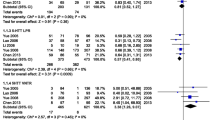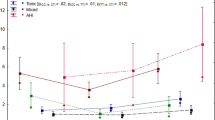Abstract
Background
Serotonin (5-HT) regulates a variety of visceral and physiological functions, including sleep. Polymorphisms in the 5-HT2A receptor gene can alter its transcription, affecting the number of receptors in the serotoninergic system, contributing to obstructive sleep apnea syndrome (OSAS).
Objective
The aim of this study was to determine the prevalence of the 102T-C and -1438G-A polymorphisms in the 5-HTR2A gene in Brazilian patients with and without OSAS.
Subjects and methods
A cross-sectional study performed at the Otorhinolaryngology and Sleep Disorder Out Clinics, São José do Rio Preto Medical School, FAMERP. One hundred patients were examined as index cases and 100 persons as controls, of both genders to both groups. DNA was extracted from peripheral blood leukocytes, and the sites that encompassed both polymorphisms were amplified by PCR-RFLP.
Results
There was a significant prevalence of the male gender in index cases compared with the control group gender (p < 0.0001). There was no significant genotypic difference in the 102T-C polymorphism between the case and control groups (p = 1.000). The AA genotype of the -1438G-A polymorphism was more prevalent in the patients with OSAS compared with the controls (OR, 2.3; CI 95% 1.20–4.38; p = 0.01).
Conclusions
There was no difference in the prevalence of the 102T-C polymorphism between patients with OSAS and the control group. Serotoninergic system dysfunction appeared to be related to OSAS. The -1438G-A polymorphism and OSAS are related in this studied Brazilian population.
Similar content being viewed by others
References
Palmer LJ, Redline S (2003) Genomic approaches to understanding obstructive sleep apnea. Respir Physiol Neurobiol 135:187–205
Young T, Peppard P, Gottlieb D (2002) The epidemiology of obstructive sleep apnoea: a population health perspective. Am J Respir Crit Care Med 165:1217–1239
Jelev A, Sood S, Liu H, Nolan P, Horner RL (2001) Microdialysis perfusion of 5-HT into hypoglossal motor nucleus differentially modulates genioglossus activity across natural sleep-wake states in rats. J Physiol 532:467–481
Sakai K, Takada T, Nakayama H, Kubota Y, Nakamata M, Satoh M, Susuki E, Akazawa K, Gejyo F (2005) Serotonin-2A and 2C receptor gene polymorphisms in Japanese patients with obstructive sleep apnea. Intern Med 44:928–933
Bayazit YA, Yilmaz M, Ciftci T, Erdal E, Kokturk O, Gokdogan T, Kemaloglu YK, Inal E (2006) Association of the -1438G/A polymorphism of the 5-HT2A receptor gene with obstructive sleep apnea syndrome. ORL J Otorhinolaryngol Relat Spec 68:123–128
Douse MA, White DP (1996) Serotonergic effects on hypoglossal neural activity and reflex responses. Brain Res 726:213–222
Barnes NM, Sharp T (1999) A review of central 5-HT receptors and their function. Neuropharmacology 38:1083–1052
Yilmaz M, Bayazit YA, Ciftci TU, Erdal E, Urhan M, Kokturk O, Kemaloglu YK, Inal E (2005) Association of serotonin transporter gene polymorphism with obstructive sleep apnea syndrome. Laryngoscope 115:832–836
WHO (1996) Ageing and Health Programme Division of Health Promotion, Education and Communication. The Hildelberg guidelines for promoting physical activity among older persons: guidelines series for healthy ageing – I. Heidelberg, Germany:August
Li HY, Chen NH, Lee LA, Shu YH, Fang TJ, Wang PC (2004) Use of morphological indicators to predict outcomes of palatopharyngeal surgery in patients with obstructive sleep apnea. ORL J Otorhinolaryngol Relat Spec 66:119–123
WHO (1995). Physical status: the use and interpretation of anthropometry. Report of a WHO Expert Committee. WHO Technical Report Series 854. Geneva: World Health Organization.
Ayub Q, Tyler-Smith C (2009) Genetic variation in South Asia: assessing the influences of geography, language and ethnicity for understanding history and disease risk. Brief Funct Genomic 8:395–404
Larkin EK, Patel SR, Goodloe RJ, Li Y, Zhu X, Gray-McGuire C, Adams MD, Redline S (2010) A candidate gene study of obstructive sleep apnea in European Americans and African Americans. Am J Respir Critic Care Med 182:947–953
Fenik P, Veasey SC (2003) Pharmacological characterization of serotonergic receptor activity in the hypoglossal nucleus. Am J Respir Crit Care Med 167:563–569
Riha RL, Gislasson T, Diefenbach K (2009) The phenotype and genotype of adult obstructive sleep apnoea/hypopnoea syndrome. Eur Respir J 33:646–655
Taheri S (2004) The genetics of sleep disorders. Minerva Med 95:203–212
Acknowledgments
We thank the patients who gave their consent for enrollment in this study; without their cooperation, this study would not have been possible. Their contribution has been extremely important in improving Brazilian research.
We would like to thank the FAPESP FOUNDATION for their financial support (#2008/01070-4).
Conflicts of interest
The authors declare that they have no conflict of interest.
Author information
Authors and Affiliations
Corresponding author
Rights and permissions
About this article
Cite this article
de Carvalho, T.B.O., Suman, M., Molina, F.D. et al. Relationship of obstructive sleep apnea syndrome with the 5-HT2A receptor gene in Brazilian patients. Sleep Breath 17, 57–62 (2013). https://doi.org/10.1007/s11325-012-0645-y
Received:
Revised:
Accepted:
Published:
Issue Date:
DOI: https://doi.org/10.1007/s11325-012-0645-y




